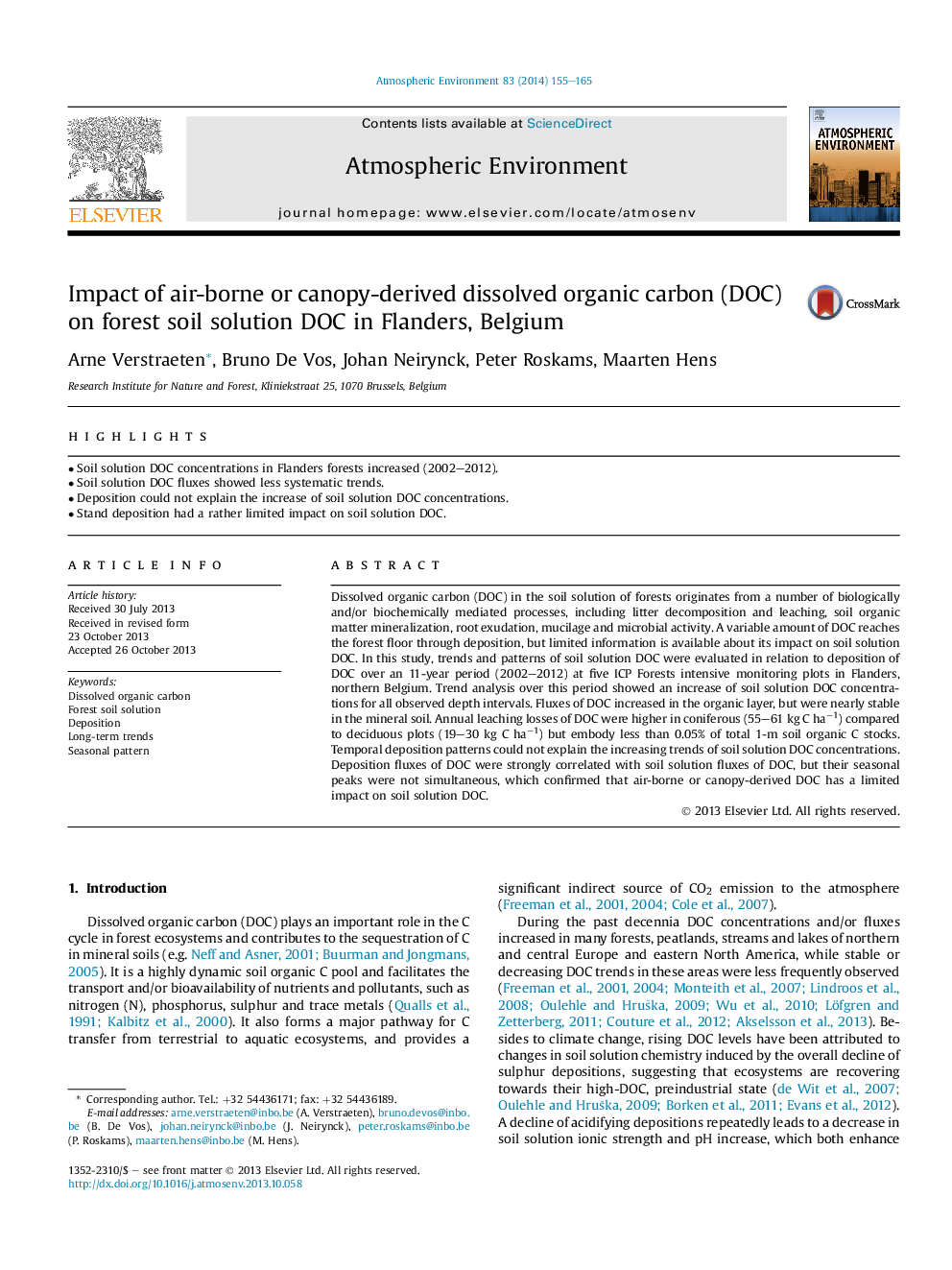| Article ID | Journal | Published Year | Pages | File Type |
|---|---|---|---|---|
| 6340955 | Atmospheric Environment | 2014 | 11 Pages |
â¢Soil solution DOC concentrations in Flanders forests increased (2002-2012).â¢Soil solution DOC fluxes showed less systematic trends.â¢Deposition could not explain the increase of soil solution DOC concentrations.â¢Stand deposition had a rather limited impact on soil solution DOC.
Dissolved organic carbon (DOC) in the soil solution of forests originates from a number of biologically and/or biochemically mediated processes, including litter decomposition and leaching, soil organic matter mineralization, root exudation, mucilage and microbial activity. A variable amount of DOC reaches the forest floor through deposition, but limited information is available about its impact on soil solution DOC. In this study, trends and patterns of soil solution DOC were evaluated in relation to deposition of DOC over an 11-year period (2002-2012) at five ICP Forests intensive monitoring plots in Flanders, northern Belgium. Trend analysis over this period showed an increase of soil solution DOC concentrations for all observed depth intervals. Fluxes of DOC increased in the organic layer, but were nearly stable in the mineral soil. Annual leaching losses of DOC were higher in coniferous (55-61 kg C haâ1) compared to deciduous plots (19-30 kg C haâ1) but embody less than 0.05% of total 1-m soil organic C stocks. Temporal deposition patterns could not explain the increasing trends of soil solution DOC concentrations. Deposition fluxes of DOC were strongly correlated with soil solution fluxes of DOC, but their seasonal peaks were not simultaneous, which confirmed that air-borne or canopy-derived DOC has a limited impact on soil solution DOC.
